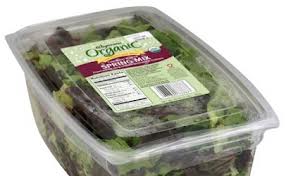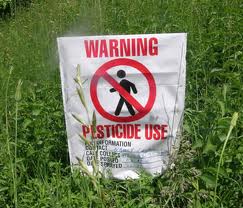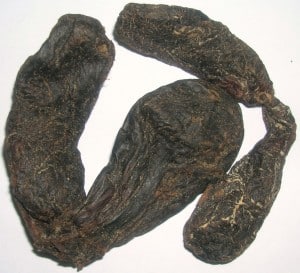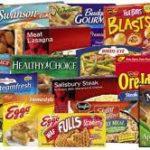While it’s no surprise to most of us that chips, drive through hamburge rs, even cereals are processed, it may surprise you to learn whole wheat breads and other products are processed too. Some should be avoided like the plague and others deserve a place at the table.
rs, even cereals are processed, it may surprise you to learn whole wheat breads and other products are processed too. Some should be avoided like the plague and others deserve a place at the table.
First, what is ‘processing?’ Well, there are many types….there’s canning, freezing, dehydration, and refrigeration all of which alter the food from its natural state.
Then we have additives which are flavorings that are added to change a foods taste, and preservatives which are added to extend the life of the food (or preserve it).
_______________________________________________________________________________
The Hierarchy of Processed Foods:
Minimally Processed (little has been done to the product or added to it)
- pre packaged salads (not potato and macaroni salads, but just plain lettuce)
- cut up vegetables and fruits
Processed (preservatives and additives added to increase shelf life and taste)
- Pasta sauces
- Salad dressings
- Yogurts
Heavily Processed (trans fats are added, sulfites, etc)
- Deli Meats
- crackers
The Most Processed (heavily chemically treated foods which should be avoided completely)
- frozen entrees
- microwavable meals
- sausages, bacon
_________________________________________________________________________
Not all processed foods are bad. For example, prepackaged salads have gotten people to eat more salads. If you’re in a rush after work, sometimes choosing the pre cut veggies or a premade kabob may be the answer. And even frozen fruits and vegetables are picked at their peak preserving their nutrition.
But the things we need to look out for are heavily processed foods that contain artificial preservatives, food dyes, natural and artificial flavors, and unwanted high levels of sodium.
So what are these foods?
- Processed deli meats (hot dogs, salami, ham, pepperoni, sausage, bacon)
- Cereals

- Boxed rices, pastas, mac and cheese
- Frozen dinners of ANY kind
- Frozen snacks, pizzas, ice creams
- Crackers, Goldfish, chips, snacks
What are the problems with these foods?
In a November 1, 2011 edition of the Food Science and Food Safety Journal, Pew Health Group published an analysis of our food additive regulatory program. This is what they found:
“Four primary areas of concern were revealed through this analysis:
- The FDA is unaware of a large number of chemical uses in food and, therefore, cannot ensure that safety decisions regarding these uses were properly made.
- Food manufacturers are not required to notify FDA of relevant health and safety studies, thereby placing FDA in the difficult position of tracking safety information for more than 10,000 chemicals with limited resources and information.
- The agency’s expedited approach to reviewing safety decisions since 1995 occurs with little public engagement.
- FDA lacks the resources and information needed to identify and prevent potential health problems or to set priorities for systematic reevaluation of safety decisions made during the past half-century.”
The FDA simply cannot regulate all the chemicals going in our food supply. We are basically as the hands of the food manufacturers instead of the protection of the FDA.
What’s in our processed foods?
Aspartame – This is one of the most common and most controversial sweeteners on the market today. Studies that have shown adverse reactions in mice do not show in humans, therefore it is assumed safe for consumption in, dare I say, regular amounts. The problem though is it is found is so MANY processed foods now the average consumer is ingesting much MORE than the participants in these studies. I just wanted to touch each ingredient briefly here, but if you’d like to read more on artificial sweeteners you can click here.
Sulfites – the FDA banned the use of sulfites on fruits and vegetables in 1986 and is still reviewing whether it should be banned from other products. Yes ladies that means our wine!
Pesticides – Certain pesticides are known neurotoxins able to cause harm to the brain, which is why it’s so important for pregnant moms to avoid them. Unfortunately over 90% of our processed foods today come from either soy or corn, both of which are genetically modified. As a matter of fact over 70 pesticides have been known to be found in your kids breakfast cereal!
brain, which is why it’s so important for pregnant moms to avoid them. Unfortunately over 90% of our processed foods today come from either soy or corn, both of which are genetically modified. As a matter of fact over 70 pesticides have been known to be found in your kids breakfast cereal!
Trans Fats – Trans fats are produced by a chemical process in which hydrogens are added to an unsaturated fat. Your body has a different response to these fats. They have been shown to increase the LDL of Cholesterol and decrease the HDL. Trans fats are SO bad for you the FDA has required them to be labeled separately on the package.
Natural and Artificial Preservatives – I’m sorry to say that natural flavors are anything but natural. One example of natural flavoring is Castoreum, which is taken from a beaver’s butt. Well ok, not his butt exactly but very close. It comes from a gland next to the beaver’s anus. Think I’m kidding? Click here. But the worst part is manufacturers are not required to tell you this because is under the umbrella of NATURAL FLAVORS.
are anything but natural. One example of natural flavoring is Castoreum, which is taken from a beaver’s butt. Well ok, not his butt exactly but very close. It comes from a gland next to the beaver’s anus. Think I’m kidding? Click here. But the worst part is manufacturers are not required to tell you this because is under the umbrella of NATURAL FLAVORS.
Do I really need to continue here?
The Bottom Line
The bottom line is this. There is a place for some processed foods in our lives, but it should be kept to a minimum. Eating a cupcake for someone’s birthday when the majority of your diet comes from organic, fresh fruits and vegetables, lean meats and fish won’t do irreversible damage.
The problem now is the average American diet typically consists of eating these types of processed foods not just daily but at each meal resulting in a myriad of health issues, especially for our kids!
RESOURCES:






Are brown rice and buckwheat noodles processed food? Their only ingredients are brown rice or buckwheat and water.
A gland next to a beaver’s butt IS natural. So what’s the problem? Yes, please continue and explain why it’s bad.
LOL ok Mary you’ve got a point. Still don’t want to eat anything that was next to it though.